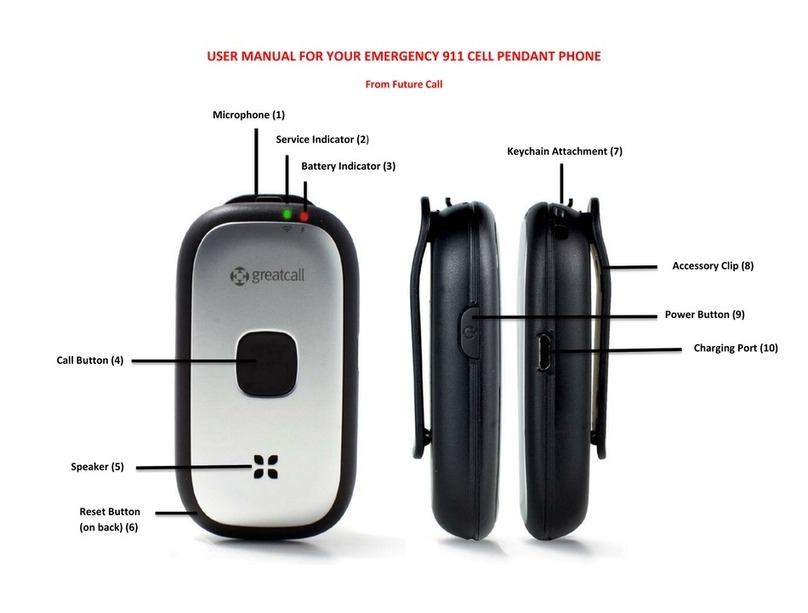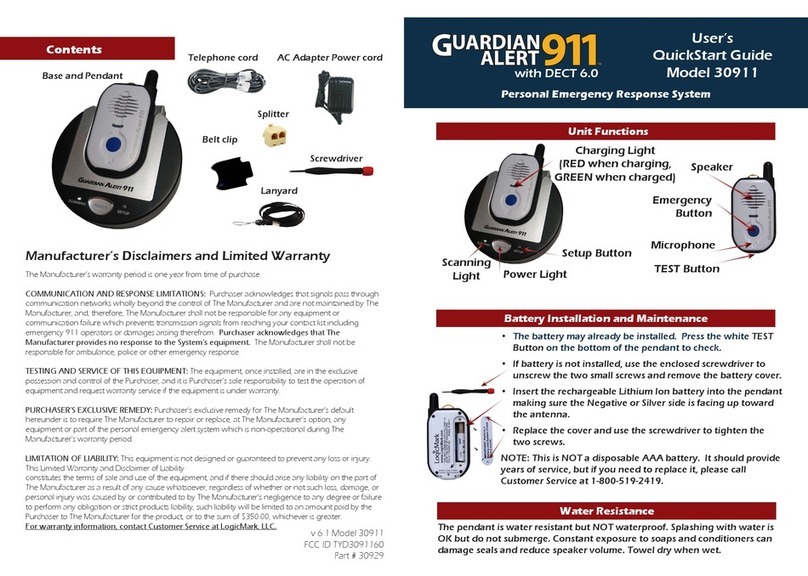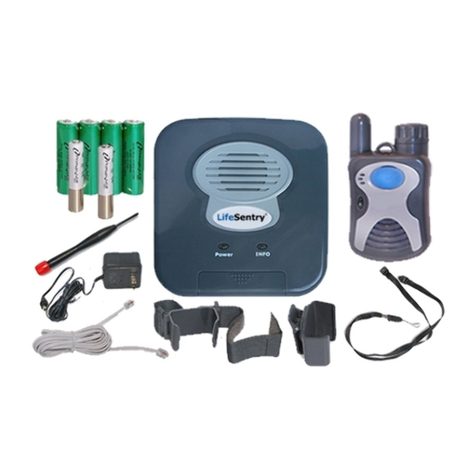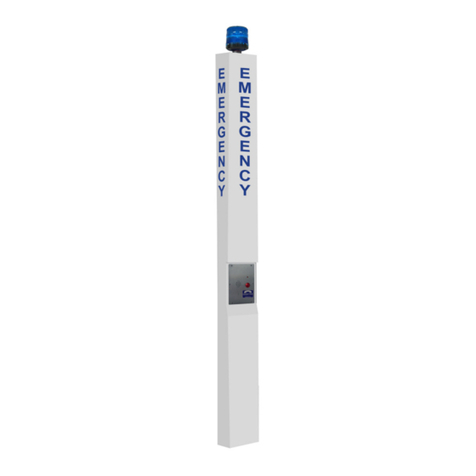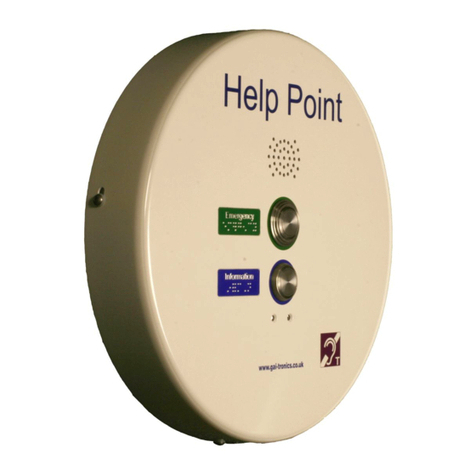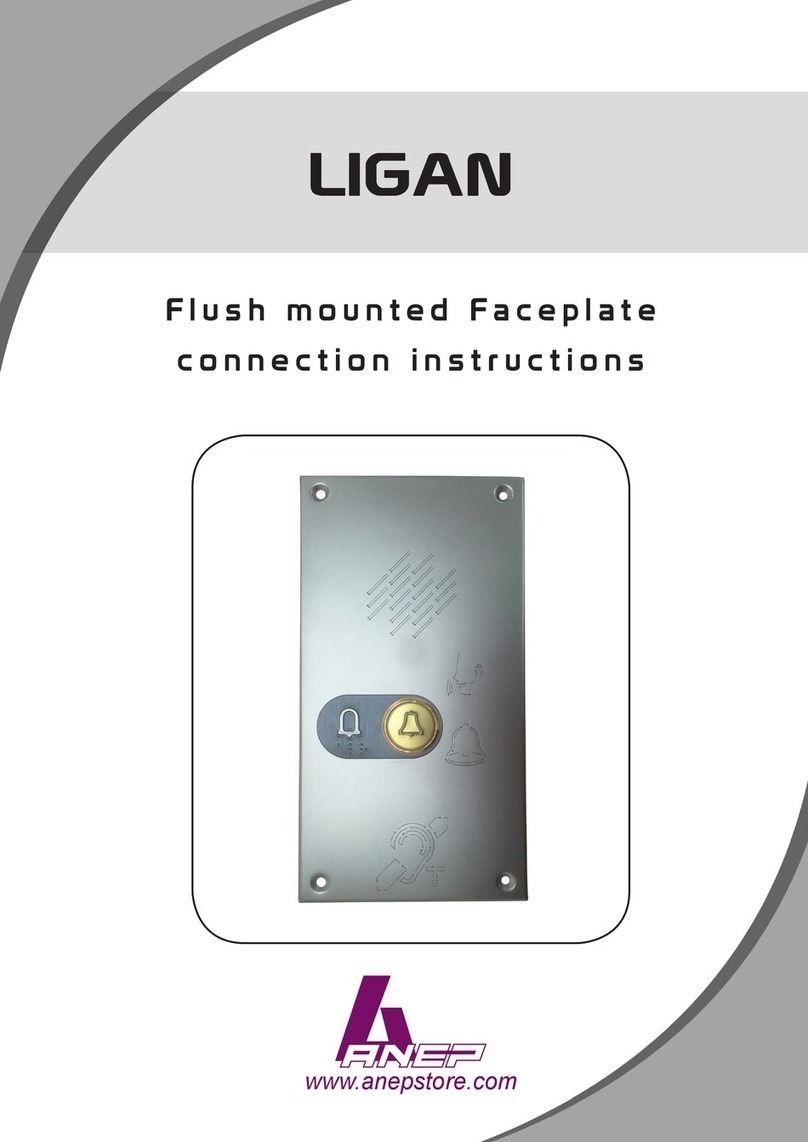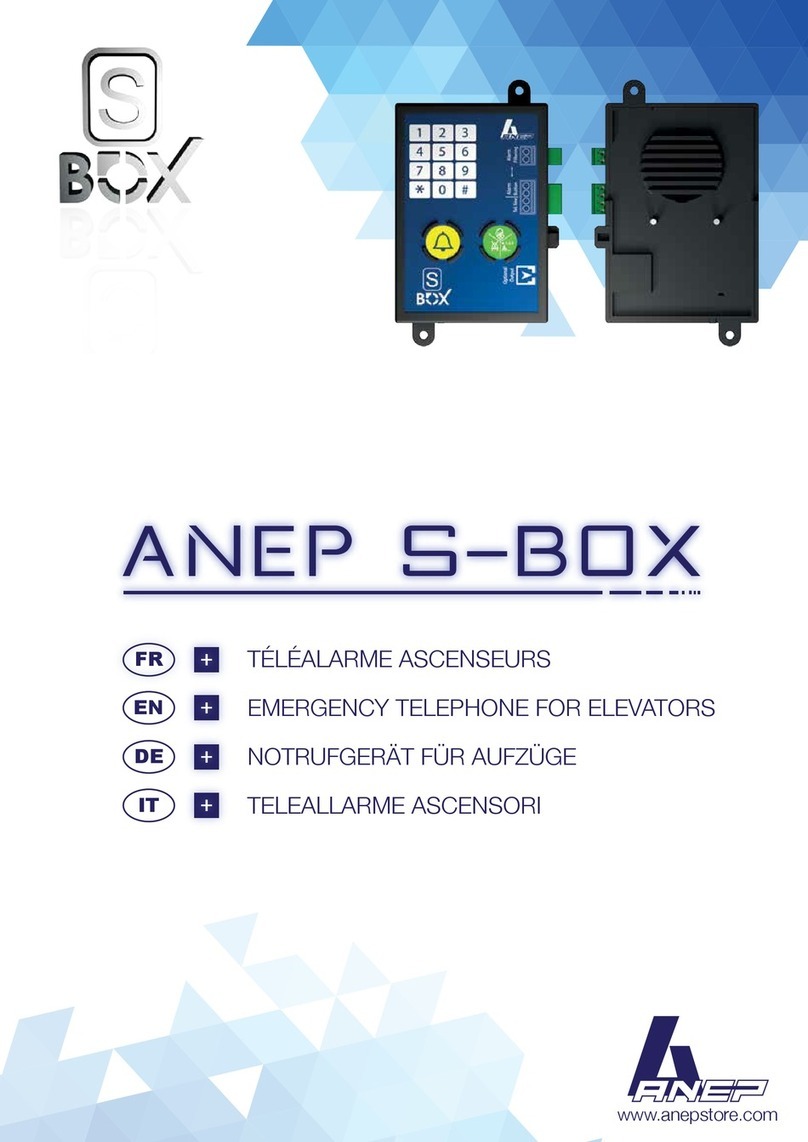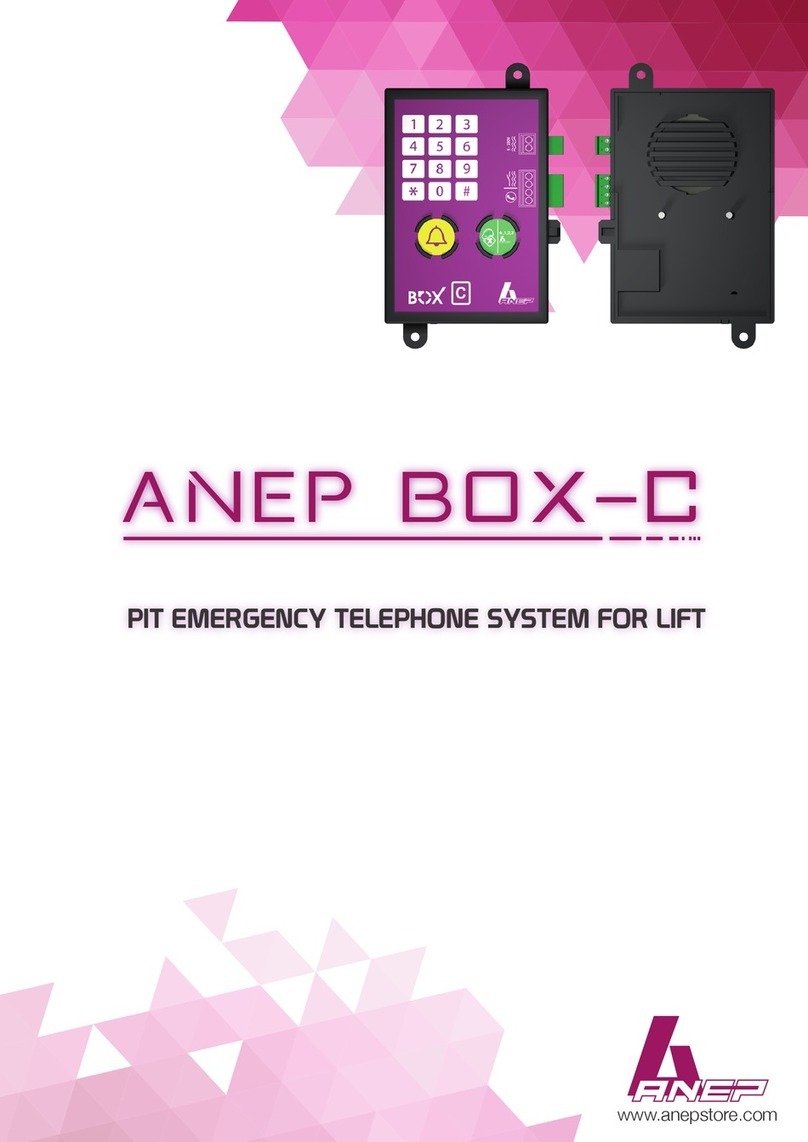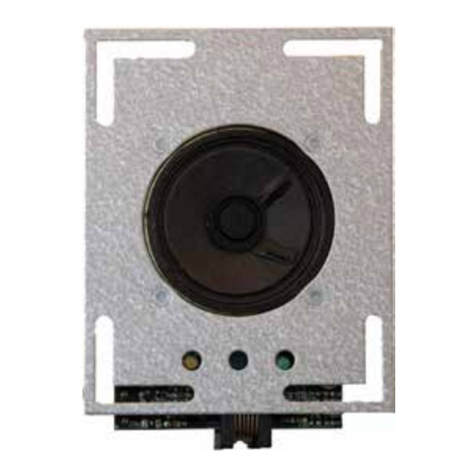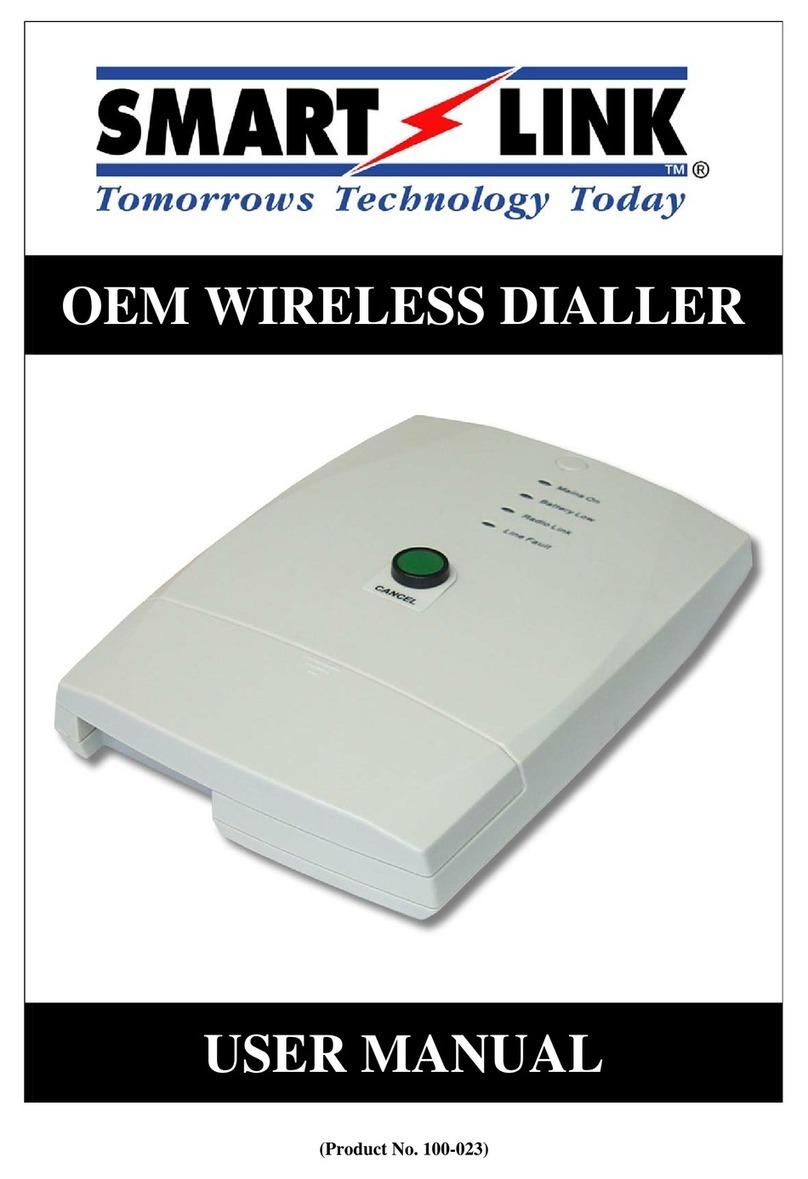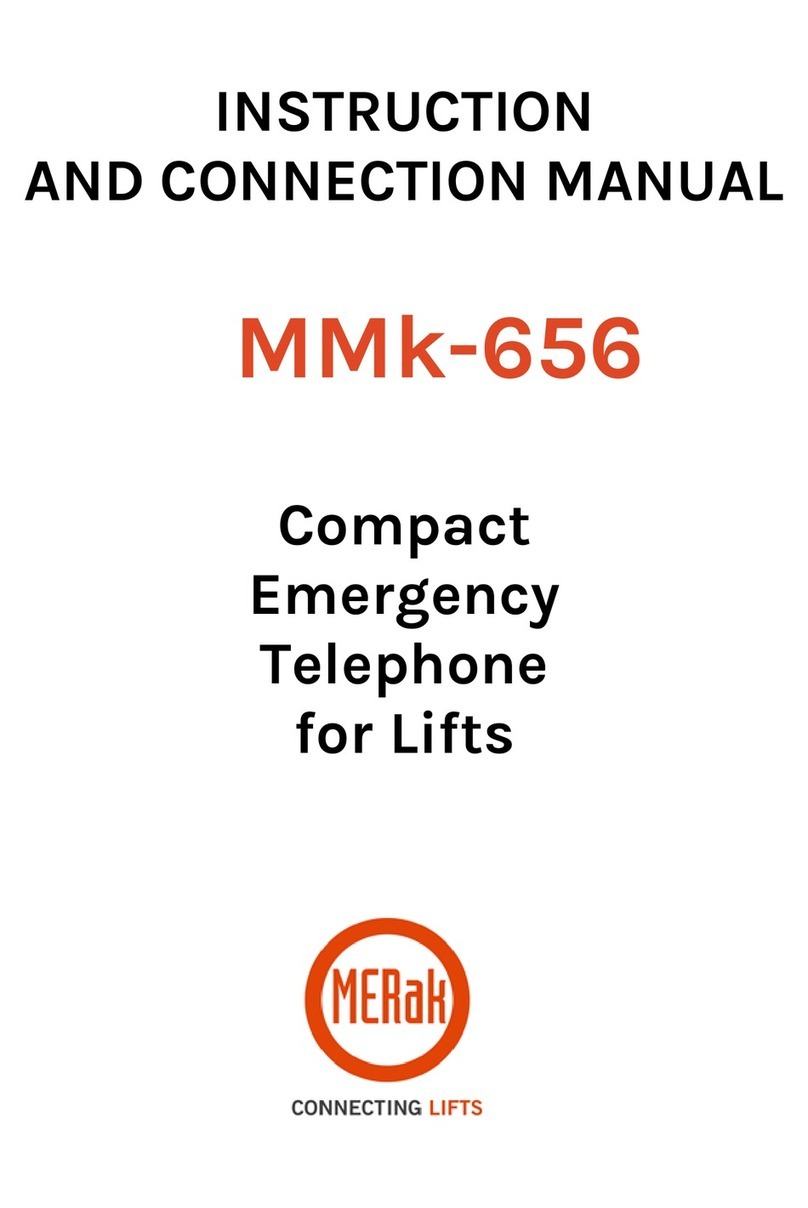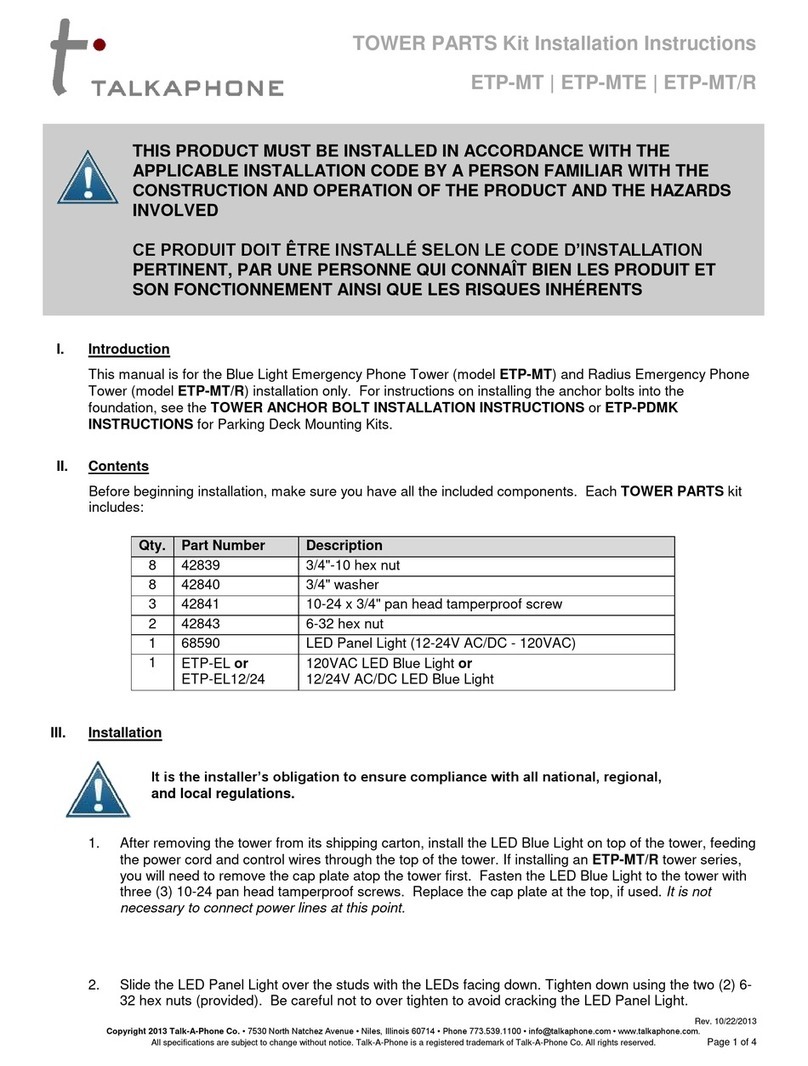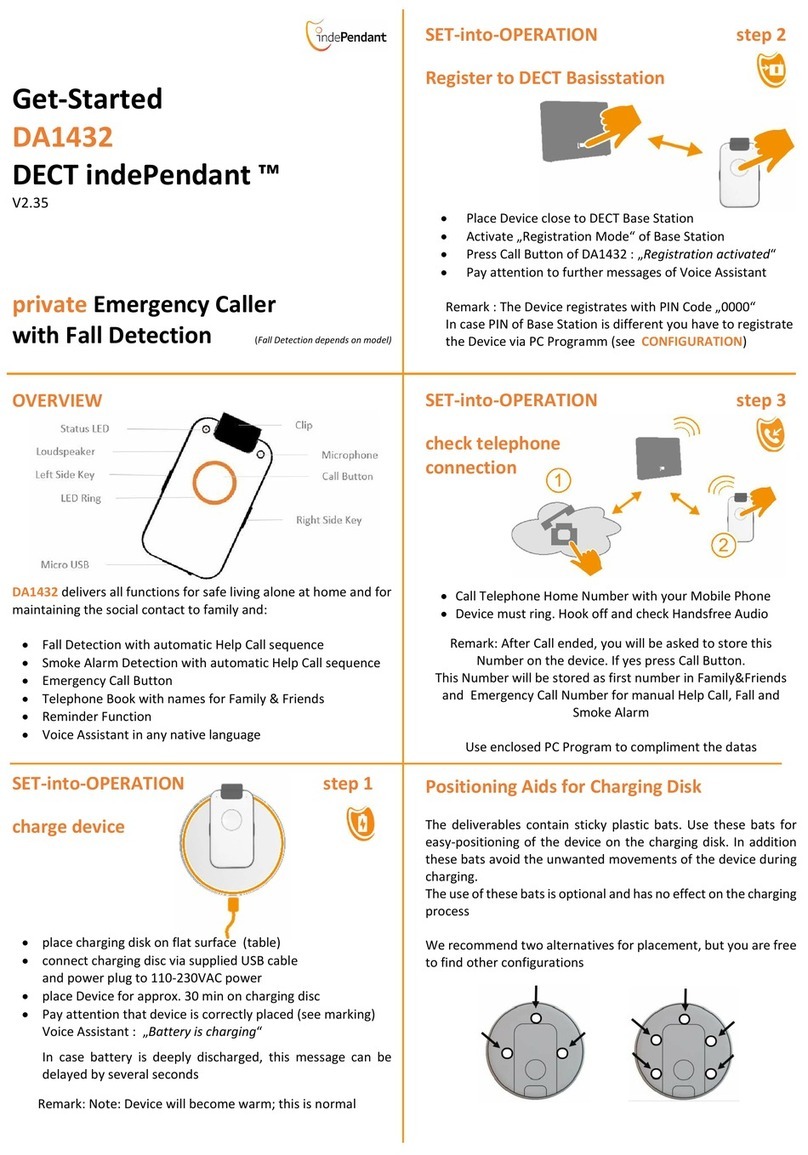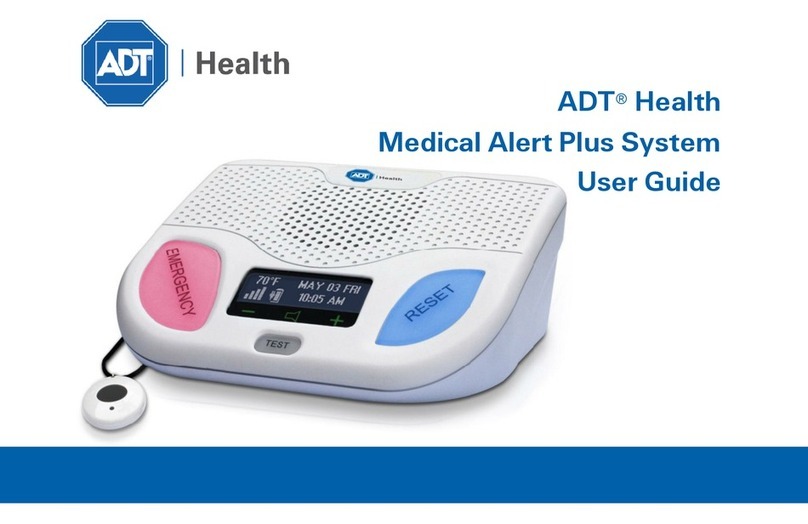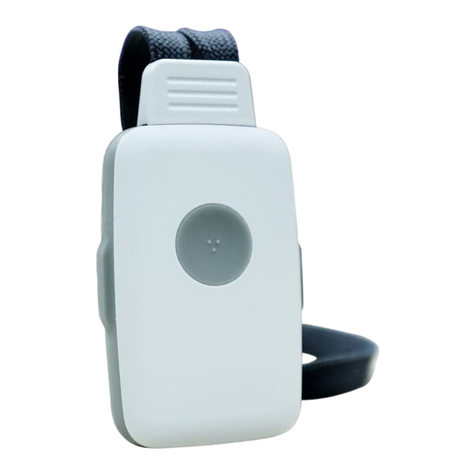
Page 2
ANEP S-BOX Modication N° 2 29/11/2013
SUMMARY
1 - TECHNICAL CHARACTERISTICS Page 4
1.1 - Technical characteristics
1.2 - Machine room Intercom and reghter until functionnality
1.3 - Factory settings
1.4 - Connecting ANEP S-BOX modules
2 - RECOMMENDATIONS Page 6
2.1 - Powering up
2.2 - Travelling cable
3 - ALARM FILTERING Page 7
3.1 - Full alarm filtering
3.2 - simple filtering
3.3 - Forced emergency elevator telephone call
4 - ADDRESSING Page 8
5 - PROGRAMMING MODE Page 9
5.1.1 - Enter programming mode
5.1.2 - Exit programming mode
5.1.3 - Simplified programming
5.2 - GSM mode
5.2.1 - Managing battery default on GSM PG1 gateway
5.3 - Programming numbers
5.3.1 - Programming memories 101/102
5.3.2 - Programming a pause
5.3.3 - Erasing numbers
5.4 - Memory attributions
5.4.1 - Transfer method
5.4.2 - Table of programming possibilities for a single call
5.5 - Enabling and changing of parameters
5.5.1 - Emergency elevator telephone button validation time
5.5.2 - Acknowledgement of a trapped passenger (EN 81.28)
5.5.3 - Conversation timeout
5.5.4 - Adjusting speaker volume in car
5.5.5 - Enable periodic call
5.5.6 - Test call period
5.5.7 - Listen to call identification code during transmission
5.5.8 - Modify of access code
5.5.9 - Configure of the dual call mode
